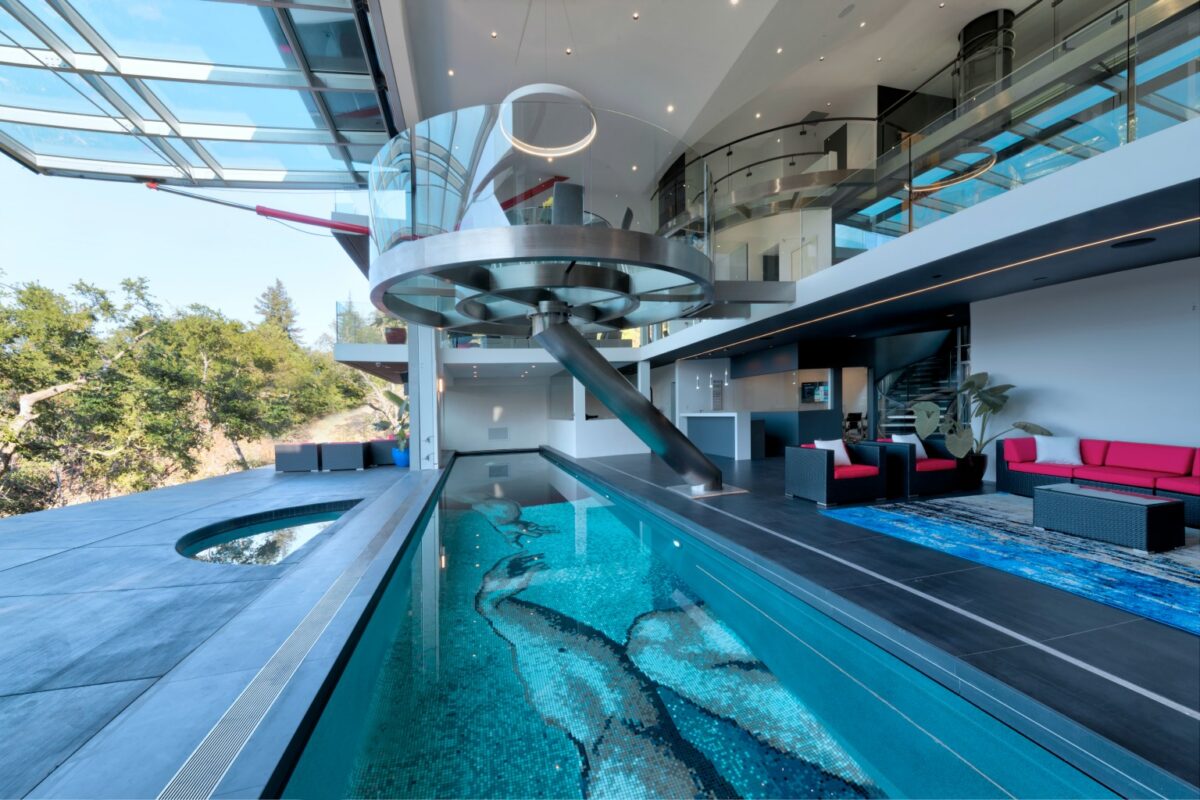Words by Sheri Baer
How can you be sure that they’re really the one? That their values are the same as yours. That they’re a good listener. And that they really understand what’s going to make you happy. After all, it’s a decision you’ll have to live with for years.
If this litmus test for choosing an architect sounds similar to selecting a significant other, it’s not surprising. “If you’re looking at working on a long-term project, it’s a big investment, so you want to make sure you have a good relationship,” Stephen Verner counsels. “It’s a long commitment and you really get into the nitty-gritty.”
Malika Junaid acknowledges that closeness is a necessity: “We really get to understand our clients, sometimes even more than their own families, because we have to understand their lifestyle in order to design what will work for them.”
Jerome Buttrick agrees that chemistry is critical. “You’re going to be working with this person for a number of years, so you should get to see them and know them in as many ways as you can,” he suggests.
In the end, how do you know if it’s right? “It’s definitely a vibe thing,” is how architect Noel Cross summarizes it.
This is also the kind of thing you can only learn by asking the architects. And that’s the point of the 5th Annual AIA Silicon Valley Home Tours on May 4, showcasing projects ranging from 3,000 to 10,000 square feet. The math is simple. Four homes from Palo Alto to Los Altos plus four architects equals an opportunity to get educated on the latest design solutions and gain insights into what makes a healthy (client/architect) relationship.
We took a sneak peek at the homes and jumped in early with questions—for a deeper dive, check out aiasiliconvalley.org/page/2019HomeTours
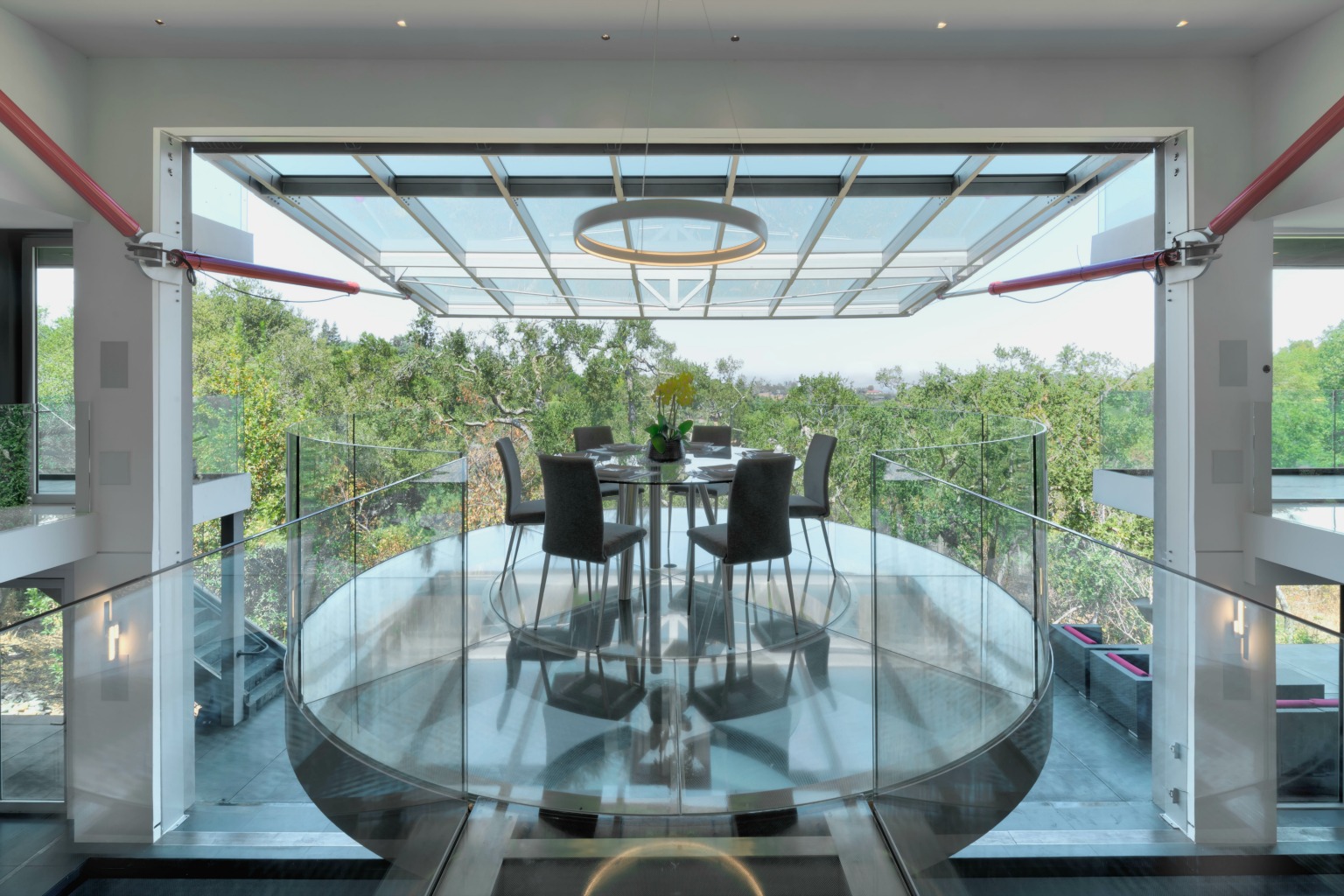
Junaid Residence, M. Designs Architects
Malika Junaid had a unique understanding of her client’s needs. That’s because the client was her own family—and Malika and her engineer husband shared a vision for transforming a secluded Los Altos Hills plot of land into their dream home. The design objective: to merge cutting-edge technology with a seamless indoor-outdoor living experience, using strategies spanning the ultimate in smart home automation, innovative sustainability and open planning. Malika viewed her home’s construction as a test run—not just for the Junaid family, but for all of her clients. She emphasized sustainable finishes (even Sharpie pen-proof countertops) and engineered novelties like a retractable kitchen tool/spice rack (using a TV lift) and tucked-away appliances revealed with the press of a button. The biggest jaw-dropper? Adapting an aircraft hangar door to turn an indoor pool into an outdoor recreational space. While the Junaid residence may seem like the stuff of science fiction, Malika estimates that 80% of her home’s approaches can be scaled and applied to client projects.
What did you learn by being your own client?
“Going through something like this helps you relate to the people on the other side, and what they’re going through. At the end of the day, it’s their passion, it’s their lifestyle, it’s their families and it’s their money and you need to be very sensitive about how you’re spending it and how you’re advocating for them. Construction is not easy. There’s a lot of stress in it. Keep in mind, a specific project is being done specifically for a client and might not necessarily be your style. What you’re looking at is whether they actually solved the problem that they were asked to solve? Did they cater to what their clients wanted? All of us on the tour are like a library of information.”
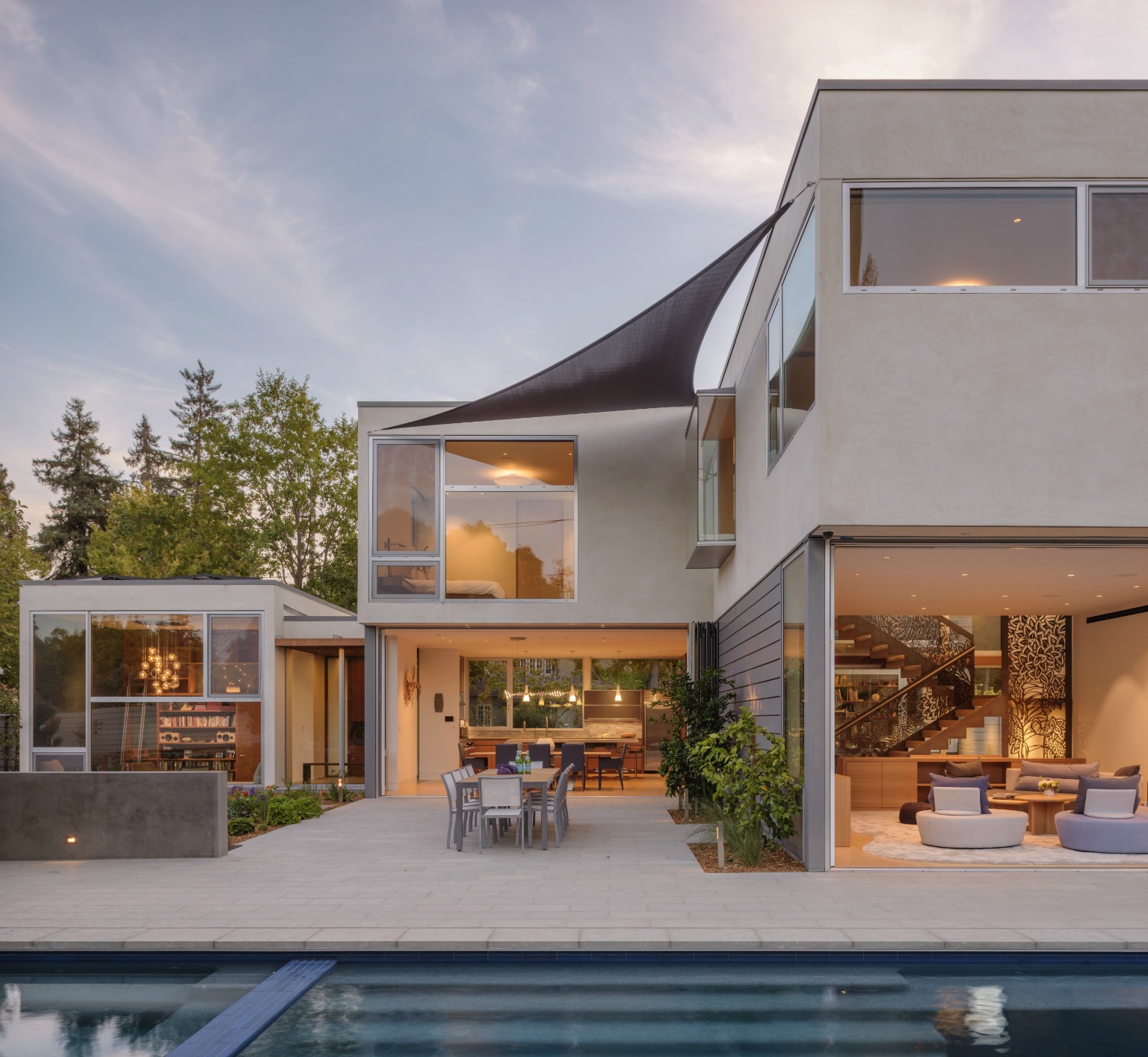
Arbol House, Verner Architects
One of the first things Stephen Verner learned about his clients is that they are serious gardeners. Design centered around creating the largest outdoor space possible and preserving an existing apple tree. Starting with a modest kitchen remodel, the project slowly began to address other aspects of the existing home, such as the garden being visible from only one room. The clients wanted a stronger connection to the outdoors, which led to big folding doors or large windows in all of the main spaces. Tying the flow together is a custom stairwell structural element extending three stories—water-jetted functional art that was craned in and welded on site. In the kitchen, teak cabinetry with a Heath blue tile backsplash and stainless accents surround an island with a cantilevered counter, supported by another water-jetted design, a companion piece to the stairwell.
What’s the value of seeing finished homes versus photography?
“I always recommend when interviewing architects and builders that clients go tour projects. Photos are really beautiful but at the same time I want them to touch and feel and experience the home because the scale in a photo is very hard to discern. If you’re going to do a project, you’re going to be spending a lot of time in it, so it needs to be comfortable. When you’re in a space, see how it talks to you. Do you feel comfortable? Listen to your body’s response. That, to me, is the most important thing you can get out of visiting homes—your visceral reaction to the home. You can see the level of detail and quality that goes into the design and execution. That’s the final piece of the puzzle for you to know you are in good hands.”
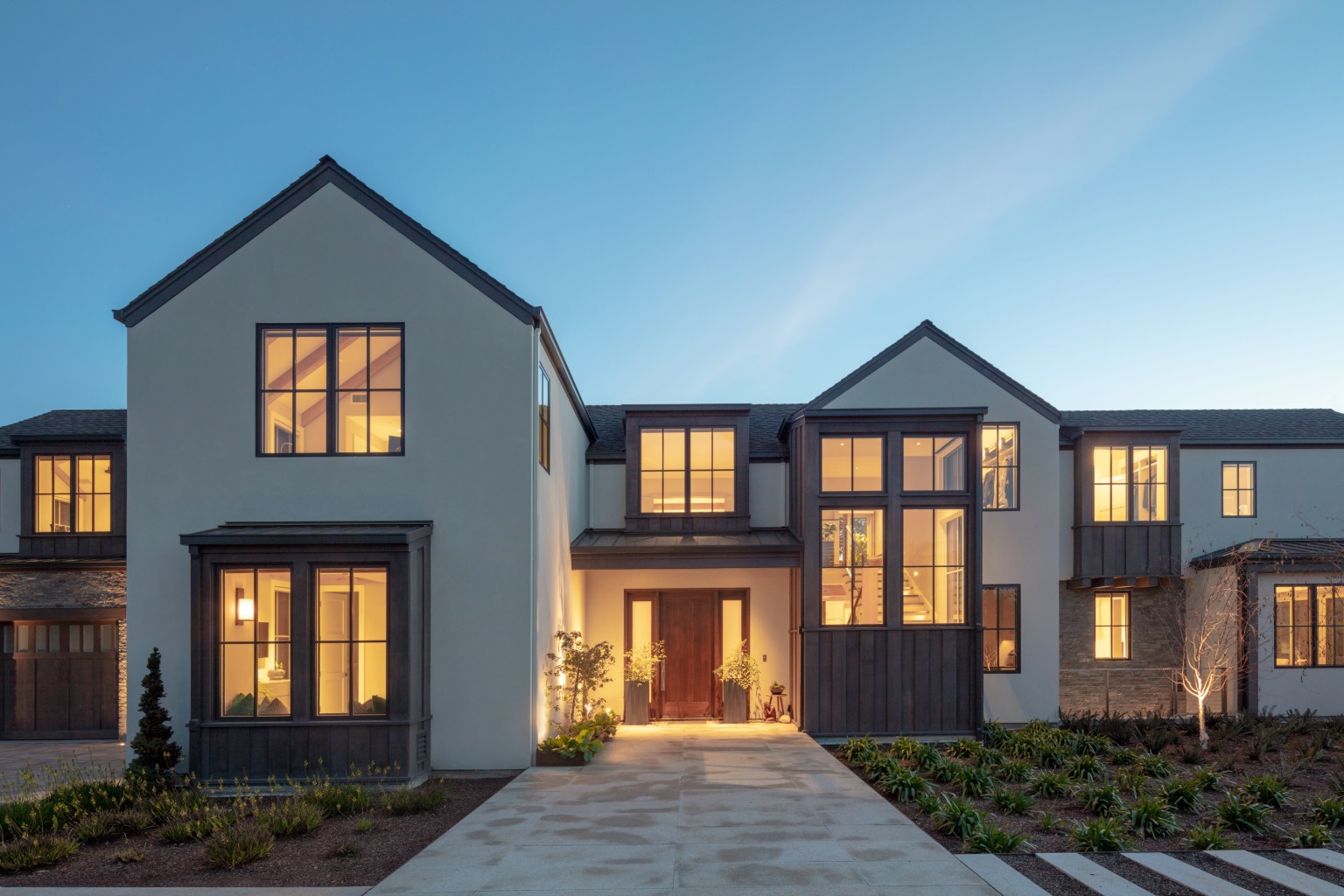
Nandell House, Noel Cross + Architects
The house that got built wasn’t the first design that Noel Cross created for his clients. It wasn’t the second either. The first concept met the wife’s criteria for a traditional Tuscan villa. The second one answered the husband’s request for modern design. The third try made them both happy: Tudor style but with modern detailing. Designing a home is not an easy straight line, as this shows. It’s a process. Built as an oasis and sanctuary for a busy Los Altos family, the Nandell House also shows the value of making select showpiece investments. To introduce a calming element, a cascading water feature was custom built for the home’s entrance. Another example can be found in the kitchen’s striking pewter-surfaced island. Although the home’s origins are in the English Tudor gable forms, the crisply and minimally detailed façades are clearly rooted in the modern world.
How would you describe the ideal client?
“From my point of view, I’d rather have the client engaged—doing research, asking questions, coming up with ideas and throwing stuff out there. The best thing for clients to do is share and share and share and be involved and then to know when to get out of the way and let the architect do the job. Also, leave time to plan your project; let it breathe. Do not call somebody up on January 1 and say, ‘Let’s get under construction by spring.’ It won’t happen and perhaps it really shouldn’t happen. If you try to work at Silicon Valley speed, you’ll mess it up. There’s this maxim that the longer you plan to spend in your house, the longer you should spend planning.”
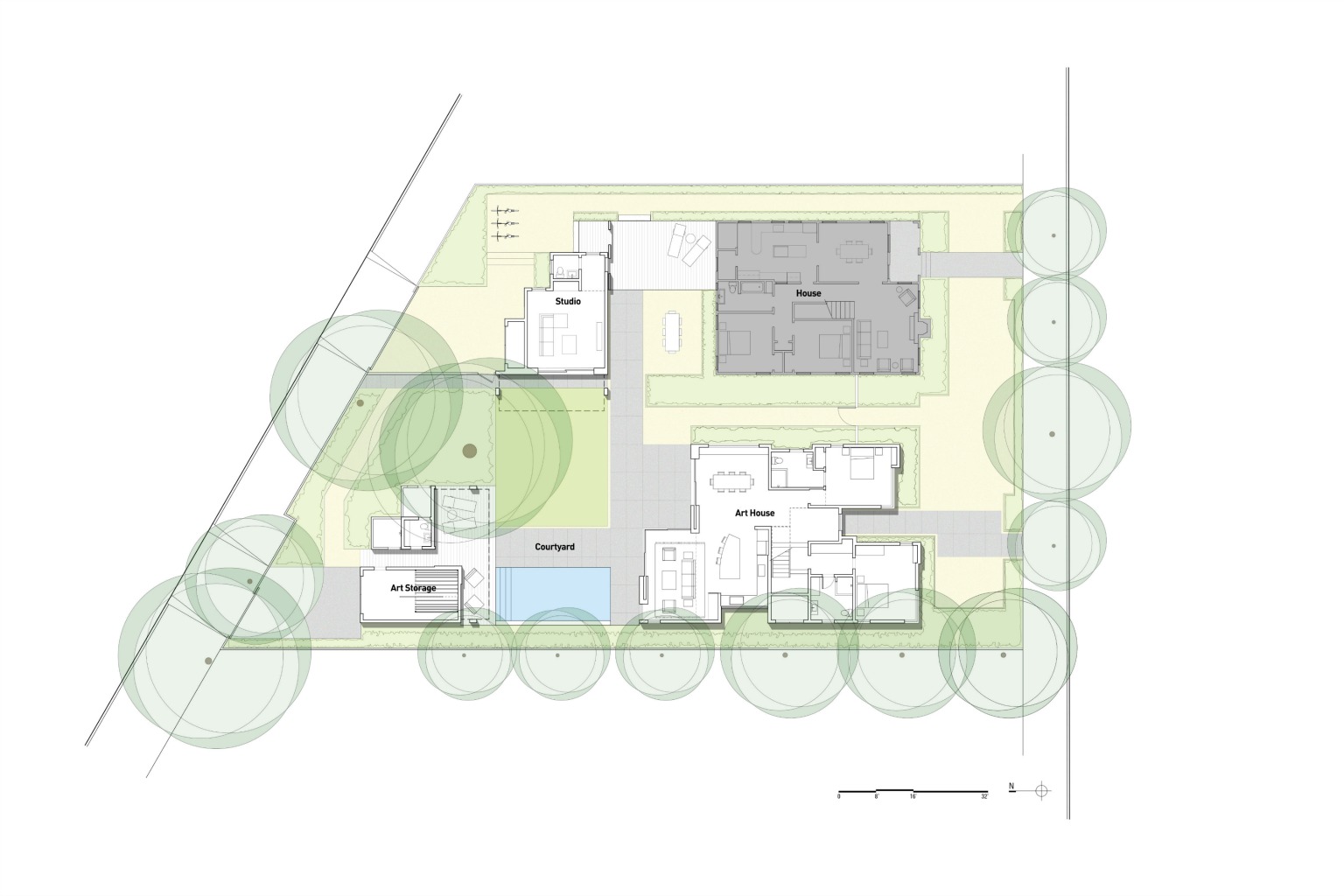
Art House + Courtyard, Buttrick Projects
Seeking additional living and gathering space and a way to display and store their burgeoning art collection, a Palo Alto couple purchased the lot adjacent to their home. For architect Jerome Buttrick, the project presented two key challenges. First, he needed to create a private world from a merged, awkwardly-shaped site with streets on two sides. He also needed to satisfy the requirements of a house and an art collection—providing both wall space and plenty of controlled, natural light. Rather than building a mega house, Jerome worked with the owners to create a set of small structures that fit with the scale of the residential neighborhood, using a courtyard as the binding agent. Taking into account dozens of pieces (including works showing in the Anderson Collection), Jerome accommodated the clients’ desire to rotate and change around art with some frequency.
What makes a successful client-architect relationship?
“You have to trust and believe in each other—that the architect will do their job and the client is going to do their job. Somebody once figured out that there are 25,000 decisions to be made in a house. An architect is only going to engage you in about 1,500 of those, maybe about 5 to 10%. Someone is going to have to decide 90% of the decisions for you and you should have trust in them as a person and trust in their taste and trust in their experience. This kind of tour is a way to start looking under the hood. It’s an opportunity to get your feet wet in a very rich, three-dimensional way.”


